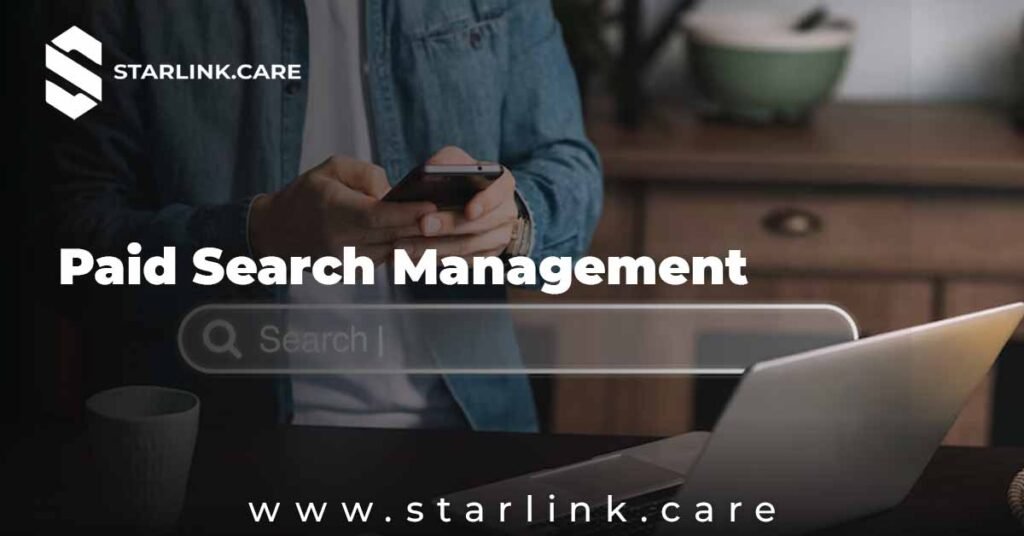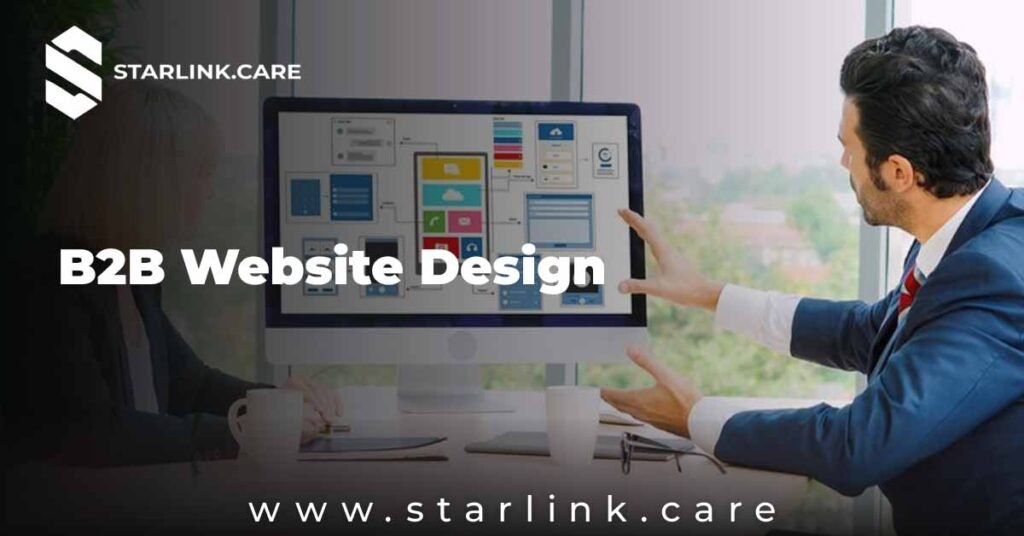introduction
Imagine going to a website to purchase corporate software. It loads slowly, the design is messy, and it doesn’t clearly show how the product might address your issues. From what standpoint would you act? Most likely you would go and look for something else.
This is exactly why success in the digital environment of today depends on B2C website design. A well-designed website is not only a tool for presenting goods or services; it is a necessary component of your company plan. When done well, it can efficiently create quality leads and boost company expansion.
We will explore the value of B2B website design in this post, go over the newest design trends, and offer a detailed walk-by-step guidance on building a website as hard-working as your sales staff needs. Not sure how to make your website a lead-generating powerhouse? Let’s get right on!
Why Designed B2B Websites Are a Business Growth Engine
First impressions many possible customers will have of your company come from your B2B website. Whether they interact with your brand, ask for a demo, or proceed to your rivals, it usually determines their choice. B2B website design therefore transcends appearance. From the first visit, it has to convey professionalism, trust, and value rightfulness.
Good B2B website design can:
- Showing your knowledge of your client’s pain issues and experience can help you to establish credibility.
- Using pertinent material and semantic keywords that fit user searches can help to improve SEO ranks and visibility.
- Simplifying the user experience and providing explicit calls to action will help to raise conversion rates.
- Using well-crafted content and navigation to address client issues will help to shorten the sales cycle.
- Your B2B website should, all things considered, be a lead magnet drawing inbound visitors into long-term customers.
Real Story: From Conversion to Frustration
Let’s discuss Sarah, a growing tech company’s marketing manager. She began investigating online since her team need a project management solution. She clicked a few times and came upon an antiquated and challenging to use B2B website. Jargon dominated the homepage, and the call-to- action (CTA) wasn’t obvious. Angry, Sarah bounced and carried on looking.
A few minutes later she found herself on still another website. This time the design was neat, the content was straightforward, and the CTA spoke unequivocally: “Get a free demo.” She clicked through, discovered more about the offering, and finally set a demo with their sales staff.
Which corporation do you suppose acquired Sarah’s business?
This narrative emphasises the quite strong influence of B2B website design. Done well, it engages the audience, fosters confidence, and finally propels corporate expansion.
Detailed Guide on Creating a Winning B2B Website Design
Building a B2B website that generates leads and propels expansion calls both strategic preparation and execution. Here is a detailed manual to assist you in starting:
1. Know the wants of your audience.
Knowing your audience and their needs is absolutely vital before starting design. Customer research starts successful B2B website design.
Consider this:
- Their areas of difficulty are what?
- Their buying behaviour is what?
- Before purchase of your good or service, what are the main queries people have?
Create personas for your ideal customers detailed profiles. Create these personalities from industry research, sales teams, and poll data. This guarantees that your website is built considering their demands.
2. Create a succinct, benefit-oriented message.
In business-to-business website design, clarity is really essential. Visitors should be aware right away what your company does and how it might benefit them.
Try something more particular than generic claims like “We offer software solutions for businesses.”
“With our easy project management system, raise the output of your team by 25%.
This strategy grabs the attention of the visitor right away and expresses value.
3. Simplify Your Direction of Travel.
A messy website could mislead users and turn them off. Make sure information on your website is easily found and simplify its navigation. Clearly and logically arrange your site:
- Homepage; Product Solutions; Case Studies; Contact Us
Make sure important pages only one click away as well. Back to top buttons or sticky menus help to enhance user experience.
4. Improves user experience by means of visuals
Since images grab people’s attention faster than words, make sure your graphics maximise comprehension and interaction.
Add the following visual kinds:
- Complex concept explanations in infographics
- Explainer videos illustrating the operation of your offering
- Images both before and after your solution shows how it enhances results.
- Rapid professional graphics creation is made possible by tools like Visme and Canva.
5. Add aspects of trust-building.
In business-to-business dealings, trust is absolutely essential. Your website should have components that inspire confidence to help establish credibility, such:
- Client logos from well-known businesses using your offering
- Testimonials from clients stressing the worth you offer
- Case studies showing how your approach addressed particular challenges
Including these components all across your website builds confidence and makes visitors feel more at ease to proceed.
6. Guarantee Mobile Reactivity
A Google study indicates that more than sixty percent of B2B consumers conduct their research on mobile devices. You will lose a good amount of your possible audience if your website is not responsive.
Make sure your website loads quickly, is clearly CTAs, and is mobile-optimized with simple navigation.
7. Quickly Improve Your Site for SEO
User experience and SEO ratings directly relate to website speed. Reduced conversions and increased bounce rates follow from slow-loading pages.
These pointers help you to increase speed:
- Image compression helps to cut file size.
- Reduce HTML and CSS files.
- Use browser caching to load things more quickly.
Using semantic keywords connected to your company can also help you to improve your website for SEO. As a matter of fact,
- lead creation
- Business-to- Business marketing approaches
- Optimising conversions
These keywords will enable your website to rank higher on search engines, so increasing natural visitors.
Typical Errors To Avoid
B2B website design is something even the greatest marketers may fall short of. Here are some things to be on lookout:
- Avoid broad CTAs like “Learn More.” Be precise and clear—a free demo performs better.
- B2B buyers are not looking for long paragraphs; they are looking for clear, succinct knowledge overloading of visitors. Emphasise succinctness and clarity.
- Ignoring mobile optimisation: Never undervaluate the influence of a responsive design. More people are browsing on mobile than they have ever done.
- Not only on its characteristics but also on how your product will address a customer’s problem to underline advantages.
FAQs
What is B2B website design?
B2B website design focuses on creating websites that appeal to other businesses, driving leads and conversions effectively.
Why is B2B website design important?
It helps businesses build trust, communicate value, and convert visitors into qualified leads, leading to long-term growth.
How does a B2B site attract quality leads?
Through clear messaging, strong CTAs, fast load times, SEO optimization, and user-friendly navigation tailored to business clients.
What features should a B2B website have?
Key features include responsive design, lead capture forms, client testimonials, fast loading speed, and SEO-optimized content.
Can B2B web design boost sales?
Yes, a well-designed B2B site increases credibility and conversions, helping to turn site visitors into paying business clients.
Conclusion
Your website serves your company as a 24-hour salesperson, not only as a digital brochure. You are losing chances for growth if it is not meant to efficiently turn guests into leads. Not only can B2B website design help to create a good initial impression, but it also helps to drive company expansion and raise lead quality.
A well-designed website is a potent marketing tool that draws the appropriate audience, builds relationships, and turns prospects into long-term customers. Applying the ideas in this article—from knowing your target to streamlining navigation and optimising for SEO you can create a website as hard-working as your sales team. for more Information Starlink.care.







